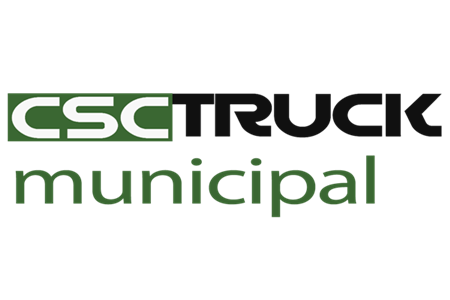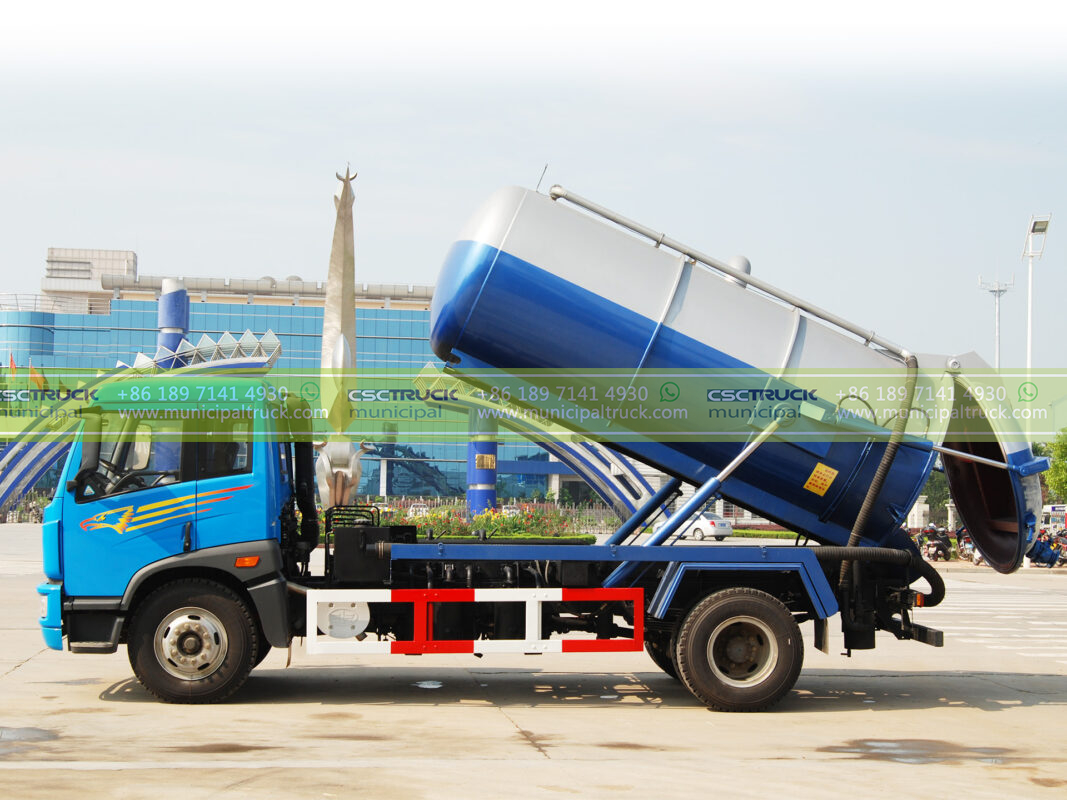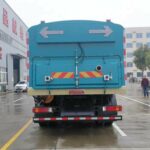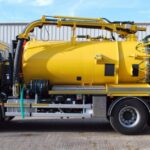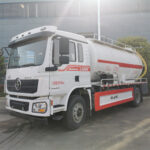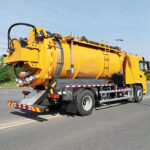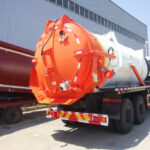In the complex ecosystem of urban infrastructure management, drain and sewer blockages present multifaceted challenges that demand more than brute-force solutions. While traditional rodding machines and hydro-jetting units excel in routine pipe scouring, vacuum sewer trucks (combining high-volume suction tanks with pressurized water systems) emerge as indispensable assets for scenarios where precision, containment, and environmental sensitivity are non-negotiable. Understanding their specialized capabilities reveals why municipalities and contractors increasingly deploy them for high-stakes cleaning operations.
Critical Operational Scenarios Demanding Vacuum Technology
1.1 Overcoming Voluminous Sediment & Sludge Accumulation
Conventional jetting units struggle when drains are clogged with dense, semi-solid debris like:
- Industrial sediment (foundry sand, concrete slurry) settling in low-flow pipes
- Organic sludge matrices combining fats, greases, and solids in restaurant districts
- Stormwater detritus (silt, gravel, organic matter) post-flooding
Vacuum trucks deploy dual-phase extraction: high-pressure water (3,000–5,000 PSI) fractures debris clusters, while simultaneous vacuum suction (up to 28″ Hg) immediately removes loosened material. This integrated liquification-extraction cycle prevents re-settling of debris downstream, a common failure point with standalone jetting. For wastewater plants processing 50+ tons of grit daily, onboard separation tanks enable immediate solids dewatering, reducing hauling trips by 60% compared to transporting liquid slurry.
1.2 Mitigating Hazardous Material Exposure Risks
Sewers accumulating toxic industrial waste (solvents, heavy metals) or biohazards (hospital effluents, slaughterhouse waste) require closed-loop handling. Vacuum trucks excel here through:
- Hermetically sealed tanks with chemical-resistant polyurethane liners
- Explosion-proof pumps and electrical systems for volatile compound extraction
- Negative-pressure containment preventing aerosolized pathogens from escaping
During a 2024 pharmaceutical plant incident in Hamburg, vacuum units safely removed 12,000 liters of antibiotic-contaminated slurry without a single exposure event – a task impossible for open-system jetting rigs risking environmental release.
1.3 Precision Operations in Environmentally Sensitive Zones
Near protected wetlands, historic districts, or unstable soils, excavation is often prohibited. Vacuum trucks enable non-invasive resolution of:
- Root intrusions cracking clay pipes beneath protected oak groves
- Collapsed section debris removal prior to cured-in-place-pipe (CIPP) lining
- Infiltration/inflow (I/I) source tracing via targeted sediment removal at joints
Their pinpoint nozzle control minimizes soil disturbance, while real-time camera guidance verifies debris removal without exploratory digging. In Charleston’s historic district, vacuum trucks cleared Civil War-era brick sewers of root masses without damaging adjacent foundations – preserving structures while restoring flow capacity.
Engineering Advantages Amplifying Effectiveness
2.1 Advanced Fluid Dynamics for Stubborn Blockages
Modern vacuum trucks integrate computational fluid dynamics (CFD)-optimized nozzles that create controlled hydraulic patterns:
- Helical rotating jets scouring pipe walls while generating suction vortices
- Forward-pull jetting heads dragging debris toward the vacuum inlet
- Variable pressure sequencing pulverizing solids without pipe damage
Simultaneous vacuum flow rates exceeding 500 CFM ensure dislodged material is captured instantly. This contrasts sharply with standard jetting, where debris migrates downstream only to cause new blockages hours later. For concrete pipes with 40+ years of mineral scaling, the combined mechanical action restores 95–98% of original diameter in a single pass.
2.2 Onboard Waste Processing & Telematics Integration
Beyond extraction, today’s vacuum trucks transform into mobile treatment centers:
- Phase-separation tanks using cyclonic filters and coalescing plates to isolate oils
- Real-time density monitoring adjusting suction power to prevent tank overfills
- Telematics-driven route optimization based on tank fill-predictive analytics
During Milwaukee’s combined sewer overflow (CSO) projects, trucks processed 800,000 gallons of sediment daily, separating recyclable grit from organic waste before direct landfill transport – cutting disposal costs by 35% through volume reduction.
2.3 Accessibility & Cold-Climate Performance Enhancements
Unlike larger combination cleaners, compact vacuum units (e.g., Vactor 2100 series) navigate narrow alleys and low-clearance sites. Key innovations include:
- Pivoting rear axles for tight-radius turns in congested downtowns
- Articulated boom hoses reaching drains beneath parked vehicles
- Cryogenic embrittlement-resistant hoses maintaining flexibility at -30°C
- Hot-water recirculation systems melting frozen sludge in winter operations
During Montreal’s record 2025 winter, vacuum fleets maintained sewer flow by clearing ice dams within hours – a task where traditional jetting would freeze solid mid-operation.
While sewer cleaner trucks with standalone jetting excel for routine grease removal, and sewage trucks (dump trailers) handle liquid transport, the vacuum sewer truck reigns supreme for integrated extraction of complex, hazardous, or geographically constrained blockages. Its engineered synergy of hydrodynamic force and industrial-grade suction creates a closed-loop solution where contamination control, precision, and efficiency converge. In aging infrastructure teetering between capacity and collapse, this technology isn’t just cleaning pipes – it’s executing microsurgery on the circulatory system of our cities. The rumble of its vacuum pump signifies not mere maintenance, but the meticulous restoration of urban resilience.
